Herbs for pain relief and inflammation have been talked about for a long time in health circles. This of course is nothing new if you have been paying attention to health news.
Herbal remedies could provide other health benefits alongside Papa T’s Better Joint Health Naturally With CBD, such as having antioxidant effects to help keep the body healthy. The side effects of prescription painkillers can make it a less appealing option for a lot of people. There is also a real possibility of getting hooked or addicted to the drugs, as shown by the current opioid crisis recorded across the world. In this vein, it is only natural to search for alternative and non-addictive ways to relieve pain and lower inflammation.
Here are some common herbal remedies used for pain relief and inflammation;
We have of course our in-house tried and true Papa T’s Better Joint Health with CBD. These are pain relief capsules made with natural ingredients that are healthy and they get you feeling a lot better in just a short time. Click the image below and place your order.
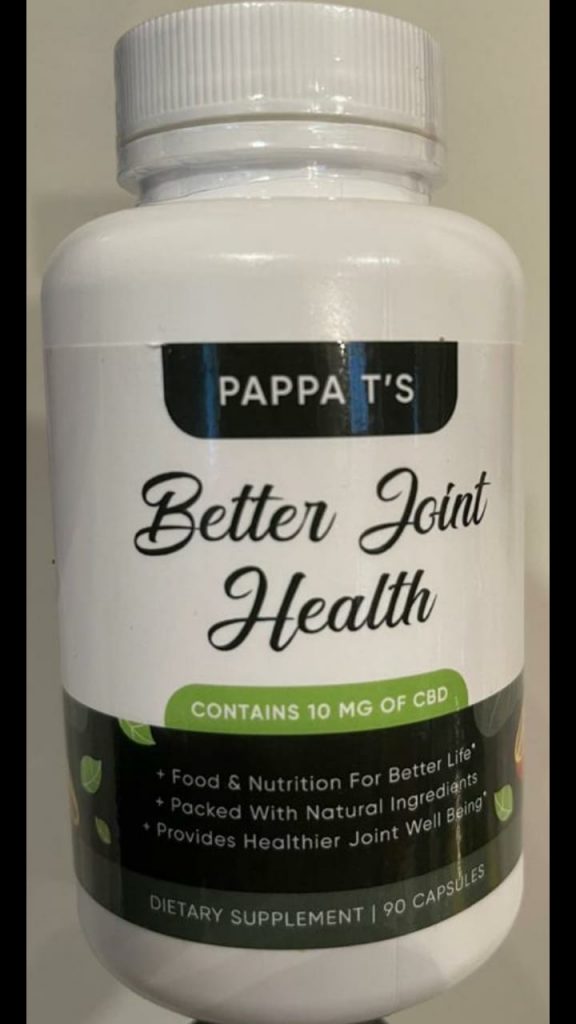
1. White willow bark
Bark from the white willow tree is one of the oldest herbal remedies for pain and inflammation. The use of White willow bark as an antipyretic and analgesic agent dates back to ancient Egyptian, Roman, Greek, and Indian civilizations. There has been a need to fall back to the use of white willow bark for the treatment of inflammatory syndromes as a result of the gastric side effects of aspirin. The healing process and mechanism of bark from the white willow are synonymous with that of aspirin, which is a non-selective inhibitor of COX-1 and COX-2, used to block inflammatory prostaglandins.
White Willow Bark has excellent anti-inflammatory properties, as a result of Salicin, a powerful combination of compounds found inside. Salicin is a compound that is very similar to aspirin and can lessen pain and inflammation. Salicin from white willow bark is converted to salicylic acid by the liver and is considered to have fewer side effects than aspirin. The usual dose of white willow bark is 240 mg/day. However, it is costlier than aspirin, and should not be used with patients with peptic ulcer disease, poorly controlled diabetes, hepatic or renal disorders, or children to avoid the risk of Reye’s syndrome, and other conditions in which aspirin would be contraindicated. The medicinal properties of bark from white willow have been cherished for centuries, even Dioscorides and Hippocrates recommended it as a remedy for rheumatic joint diseases and gout. Studies have shown that Native American healers also used willow due to its analgesic properties.
2. Green tea extract
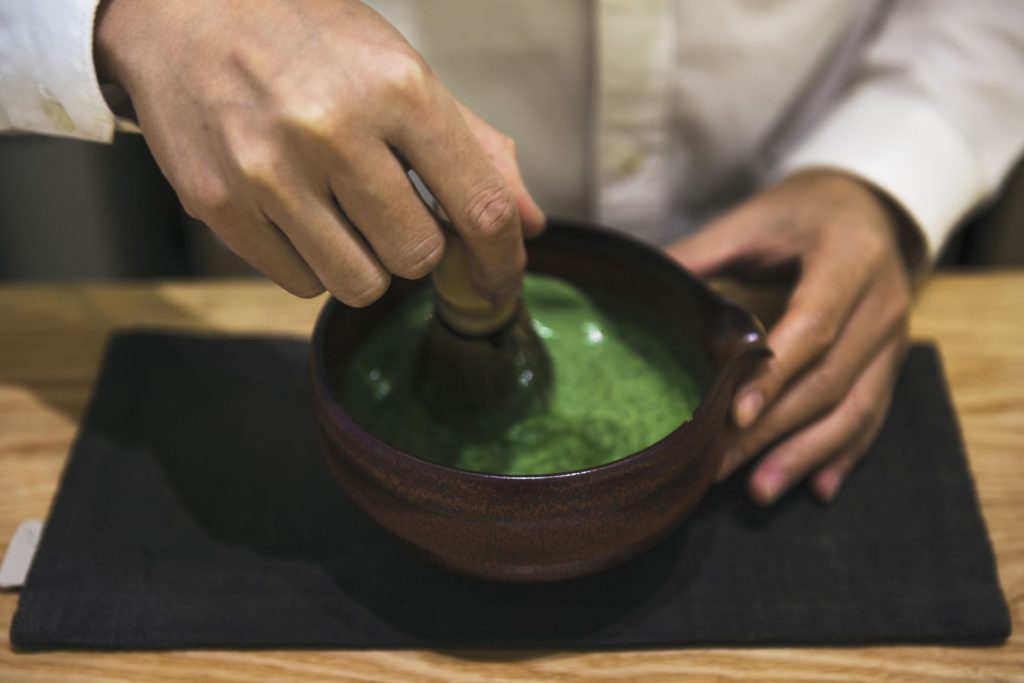
Green tea extract is used as an anti-inflammatory agent in the treatment of arthritic disease. It has also been recognized that green tea has cardiovascular and cancer preventative characteristics due to its antioxidant properties. Catechins are polyphenolic compounds found in green tea, and epigallocatechin-3 gallate is the most abundant catechin in green tea. Green tea extract has a typical dosage of 300–400 mg and can trigger stomach irritation in some people. Also because of its caffeine content, a decaffeinated variety is available; but the polyphenol content is currently unknown. Studies have shown that green tea demonstrates both chondroprotective and anti-inflammatory effects. 3–4 cups of green tea a day is ideally recommended for healthy consumption.
3. Pycnogenol
Pycnogenol is derived from the bark of the Pinus Maritima (maritime pine tree) and has been used for more than 2000 years because it has been considered effective for the healing of wounds, healing of ulcers, treating of scurvy, and reducing vascular inflammation. Pycnogenol contains a potent blend of active polyphenols, which includes taxifolin, procyanidins, catechin, and phenolic acids. Polyphenols are one of the most potent antioxidant compounds currently known.
Pycnogenol helps to significantly inhibit matrix metalloproteinase-9 (this matrix-degrading enzyme is highly expressed at sites of inflammation, and contributes to the pathogenesis of various chronic inflammatory diseases). Studies have shown that pycnogenol by its effect on vascular endothelium, is effective in reducing blood pressure and lowering the risk of venous thrombosis. Another study has also shown that pycnogenol is 50–100 times more potent than vitamin E in neutralizing free radicals and that it helps to recycle and prolong the activity of vitamins C and E in the body. The normal dosage of Pycnogenol is 100–200 mg daily, and few side effects have been reported, with the most frequent side effect being a mild gastrointestinal effect, such as diarrhea and stomach ache. Pycnogenol should not be consumed by people who are being treated with immuno-suppressants, or those receiving corticosteroid drugs because it can enhance immune system function, and interact with drugs that suppress the immune system.
4. Boswellia serrata resin
Also known by its Sanskrit name as shallaki, Boswellia serrata is a powerful anti-inflammatory herb with amazing healing effects on osteoarthritis, rheumatoid arthritis. These herbs mainly lower inflammation in the joints and can be used as an alternative for nonsteroid anti-inflammatory drugs. This lesser-known herb could be found in a tablet or gel form for external application.
The Boswellia species are better known in the western world as frankincense are trees located in Somalia, India, Ethiopia, and the Arabian Peninsula. Boswellia is known to produce a gum resin called Olibanum, which possesses anti-arthritic, anti-inflammatory, and analgesic properties. Studies have shown that Boswellia can inhibit the leukotriene biosynthesis in neutrophilic granulocytes by inhibiting 5-LOX, therefore affecting various inflammatory diseases that are given rise to by leukotrienes.
A recent study has recorded a significant improvement in arthritis of the knee, after 8 weeks of treatment with Serrata extract (333 mg B.), taken three times a day. A combination of Boswellia and Curcumin showed effectiveness when compared with non-steroidal diclofenac, used for treating active osteoarthritis. Boswellia is often given as an extract, 300-500 mg, two or three times per day, and established to contain at least thirty to forty percent (30-40%) of Boswellic acids. Although some people may experience stomach discomforts, such as acid reflux, nausea, or diarrhea, Boswellia is well tolerated in most studies.
5. Resveratrol
Resveratrol is often found in plant skin and acts as a phytoalexin to protect the plant from excessive UV radiation, infection, and helps in plant defense. This plant is also called Polygonum cuspidatum or Japanese Knotweed. Studies have found Resveratrol to have significant anti-inflammatory, antioxidant, anti-mutation, and DNA protective actions when consumed by animals and humans. Resveratrol is a plant-based polyphenol molecule that is found in various concentrations of different plants, according to a study the skins of red wine grapes are believed to have the most concentrated amounts of resveratrol. Several studies have found that resveratrol is effective for the relief of arthritic joint pain. In 2007, as reported by Elmali et al, intra-articular injection of resveratrol protects the cartilage and lowers inflammatory reaction in simulated osteoarthritis (knee pain).
6. Curcumin
Traditionally, Curcumin has been used in both ancient Chinese and Ayurvedic medicines as a treatment for digestive disorders, an anti-inflammatory agent, and a wound-healing agent. Curcumin is a flowering plant of the ginger family and a naturally occurring yellow pigment derived from Curcuma longa (turmeric). Several studies and clinical trials have highlighted the Curcumin’s anti-inflammatory, antioxidant, and anti-neoplastic effects. Another study by Karin illustrated that Curcumin might be effective in the treatment of cystic fibrosis because of its anti-inflammatory effect. It has also been suggested that Curcumin is effective for the treatment of chronic neurodegenerative diseases, colitis, arthritis, and cancer. The standard dosage of turmeric powder is 400–600 mg, taken three times per day. Studies have shown that Curcumin may be combined with lower doses of non-steroidal medications. The side effects of consuming Curcumin are few, but this agent can trigger stomach upset, and in extreme cases, gastric ulcers may occur at very high doses. Curcumin was traditionally used as a coloring and flavoring spice in food products. Apply caution if the patient is taking anticoagulant medications or high doses of non-steroidal drugs.
7. Uncaria tomentosa
The bark of Cat’s claw was traditionally used for the treatment of bursitis, arthritis, and intestinal disorders. The bark of Cat’s claw contains bursitis, alkaloids, polyphenols (proanthocyanidins, flavonoids, and tannins), and sterols. Uncaria guianensis and Uncaria tomentosa are Peruvian herbs that are derived from woody vines with small claw-like thorns at the base of the leaf, which allows the plant to climb to a height of up to 100 feet. Thus, the local name, Cat’s claw. Various studies indicate that this Peruvian herb induces a reduction in pro-inflammatory mediators.
8. Capsaicin
Capsicum Annum has been used for several medicinal purposes by people of the native American tropics for hundreds of years. This small spreading shrub was originally cultivated in the tropical regions of America but is now grown throughout the world. This was isolated by chemists more than a century ago and constitutes approximately 12% of the chili pepper.
9. Rosemary
Rosemary has been used in cooking and folk medicine owing to some scientifically proven anti-inflammatory health benefits. A study published in the Journal of Rheumatology (2003), reported that it contains rosmarinic acid, a compound known to have antioxidant, anti-inflammatory, and antimicrobial effects. Rosmarinic acid was potent in inhibiting the growth of arthritis in laboratory mice. Rosemary is an excellent source of antioxidants and anti-inflammatory compounds, which are speculated to be effective in improving the immune system and improve blood circulation.
10. Cloves
Cloves are a common spice known for their high-key anti-inflammatory benefits. In a recent study from 2017, clove essential oil exhibited huge effects on the production of several pro-inflammatory biomarkers. Clove essential oil is an effective anti-inflammatory substance.
11. Arnica
Arnica also called the mountain daisy because of its color and petals, is derived from the perennial Arnica Montana, a flower that grows in the mountains of Siberia and Europe. Ointments and creams produced from this flower head can be used to address bruises, joint pain, muscle soreness and aches, ailments, and inflammation.
Studies have shown that Arnica is usually used to treat bruises, so it is widely known by those who undergo surgery, especially plastic surgery. Topical creams and gels containing arnica are said to relieve pain and heal bruises on the skin, although scientific research is inconclusive on the matter. In 2006, a study on people who underwent plastic surgery to reduce wrinkles (Rhytidectomy), showed that homeopathic Arnica can significantly speed up healing after surgery.
Arnica has proven to be potent for the healing of several post-surgical conditions, such as inflammation, pain, and bruises. Arnica is meant to be applied on the skin and is often used as a gel. Medical experts do not recommend the application of Arnica on broken skin, or extended periods because it can prompt skin irritation. Pregnant and nursing mothers should seek medical advice before using Arnica, as most people may show hypersensitivity, or have allergic reactions from using Arnica. You should stop using arnica when this happens. Larger doses of undiluted arnica can be deadly, this plant is not to be used in internal medicine. People who are allergic or hypersensitive to any plants in the Asteraceae family should avoid using arnica and other members of this family such as dandelions, marigolds, dahlias, daisies, and sunflowers.
12. Ginger
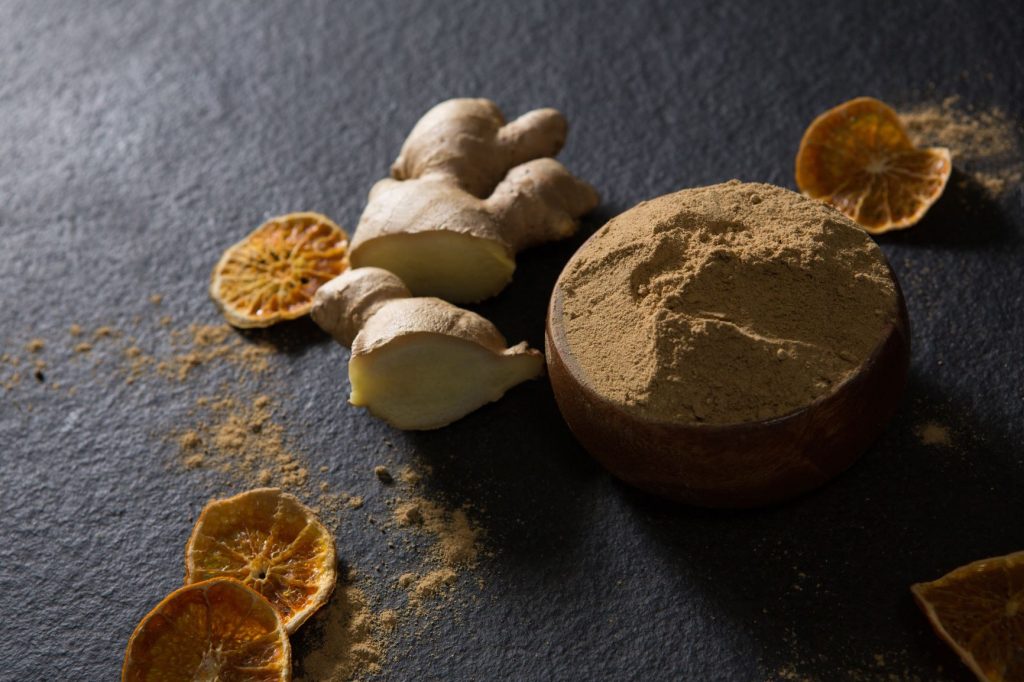
Ginger extract may help with joint and muscle pain because it contains phytochemicals, which help to prevent inflammation. Few side effects have been linked to ginger when taken in small doses.
13. Feverfew
Feverfew has been used for centuries to treat stomachaches, headaches, and toothaches. These days, feverfew is also used for migraines and rheumatoid arthritis. Mild side effects of using feverfew include canker sore and irritation of the tongue and lips. However, pregnant women should avoid this remedy.
14. Devil’s Claw
Records from a lot of studies have shown that this South African herb may be effective in managing and reducing arthritis and lower back pain. Side effects are minimal and very rare when moderate doses are taken for a short duration, but pregnant women and those with gallstones or stomach or intestinal ulcers shouldn’t take devil’s claw.
15. Essential Oils
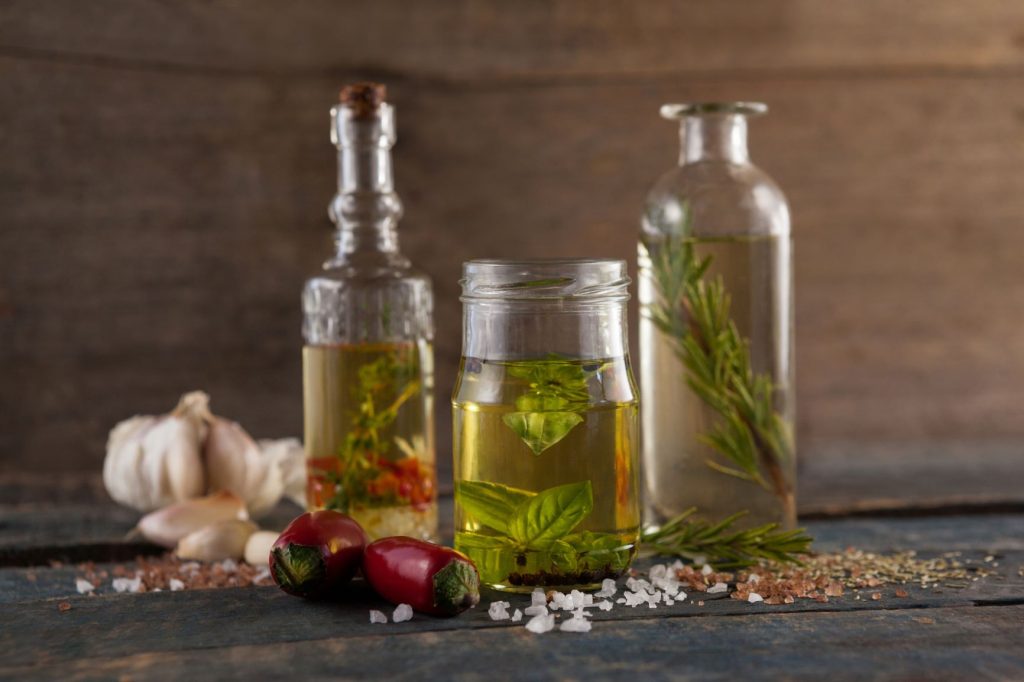
Aromatherapy is the use of aromatic oils that are mostly concentrated extracts from herbs, flowers, trees, and other plants to reduce physical pain and emotional complications. The term aromatherapy wasn’t coined until 1937, but as far back as 2000 B.C, the Egyptians are speculated to have used oils for medicinal purposes. In recent times, aromatherapy oils, also known as essential oils, are used in massage, added to bathing water, or inhale through a nasal inhaler or diffuser. Essential oils contain up to 300 compounds that have various effects on the body and directly stimulate the part of the brain that influences blood pressure, respiration, emotions, and heart rate.
Before making use of new essential oil, it is best to do a skin patch test to know its effects on your skin. Though the dose may vary, it is advisable to add about 10 drops of essential oil to every tablespoon of your carrier oil. Sweet almond, avocado, apricot kernel, grape seed, coconut, sesame, and jojoba are common carrier oils. Rub diluted oil on the inside of your forearm, and if you don’t experience any irritation or discomfort within 24 to 48 hours, then the oil is safe for use.
How to Use Essential Oil in relieving Pain and Inflammation
- Massaging diluted essential oil into the skin helps to loosen up muscles and alleviate pain. You can opt for self-massage, or hire a professional.
- Add a few drops of essential oil to a diffuser, and inhale the steam in a closed room. In the absence of a diffuser, you can fill up a bowl with hot water, add a few drops of the essential oil, lean over the bowl, cover your head with a towel, and inhale the steam. You can do this for up to 10 minutes, and no carrier oil is necessary for this method.
- You may also take a hot or tepid bath with essential oils. If you don’t want oil in your bathtub, you can add drops of essential oil to a cup of milk, and it will mix with fats in the milk. After that, sitting in the bathtub will allow the essential oil to enter your body through your skin, and steam from the hot water can also offer healing benefits. However, it is best to avoid very hot baths, it can cause dizziness.
- For a tension headache, and sprain inflammation; eucalyptus, clove, bergamot rosemary, marjoram, thyme, rose, fennel, and peppermint have analgesic properties that may help with aches and pains. To ease inflammation, use; 3 drops of rosemary, 3 drops of eucalyptus, 5 drops of lavender, and 1 drop of peppermint. Add this to a 10 ml glass bottle with a rollerball, fill the rest of the bottle with a carrier oil, and replace the roller ball cap, then shake to blend and apply to the affected area.
- Geranium, Roman chamomile, and patchouli can be beneficial when dealing with skin conditions that come with inflammation or itching. Try this soothing gel if your skin is feeling inflamed or itchy. Add 1–2 drops of patchouli, 2 tablespoons of rose hydrosol, 3 drops of ylang-ylang, and 4 drops of Roman chamomile. Add the essential oils and rose hydrosol to 2 ounces of aloe vera gel, or an unscented cream base, stir together, store in a glass container, and apply as needed.
Precautions for using essential oils
- Be cautious when trying a new essential oil, and ensure to dilute essential oils in a carrier oil.
- Never apply essential oils directly to the skin. Applying an undiluted essential oil can cause skin irritation and inflammation in some people.
- To do a patch test, mix 3-5 drops of the essential oil with an ounce of carrier oil, apply a bit of this mixture to unbroken skin of your forearm, and in the absence of a reaction within 24-48 hours; then it should be safe for use.
- Pregnant women, nursing mothers, people with an existing medical condition, and those who wish to apply essential oils on children, are advised to seek medical counseling before usage.
CONCLUSION
Mankind has depended on herbal remedies to treat the ailment from almost the beginning of our existence. The oldest evidence of using herbs as medicine dates back to a 5,000year-old Sumerian clay tablet documentary of recipes made with plants such as henbane, poppy seeds, and mandrake. Today, several plant-based remedies are used for treating arthritis. Herbal remedies are good alternatives and non-steroidal anti-inflammatory drugs for chronic, mild to moderate aches, and can reduce the need and usage of prescription drugs. Principally, herbal treatment is one of the ancient therapies for the relief of pain used by humans. Due to their lower complications and lesser side effects than synthetic drugs, people in recent years have returned to the use of herbal medicines and remedies for the relief of pain and inflammation.
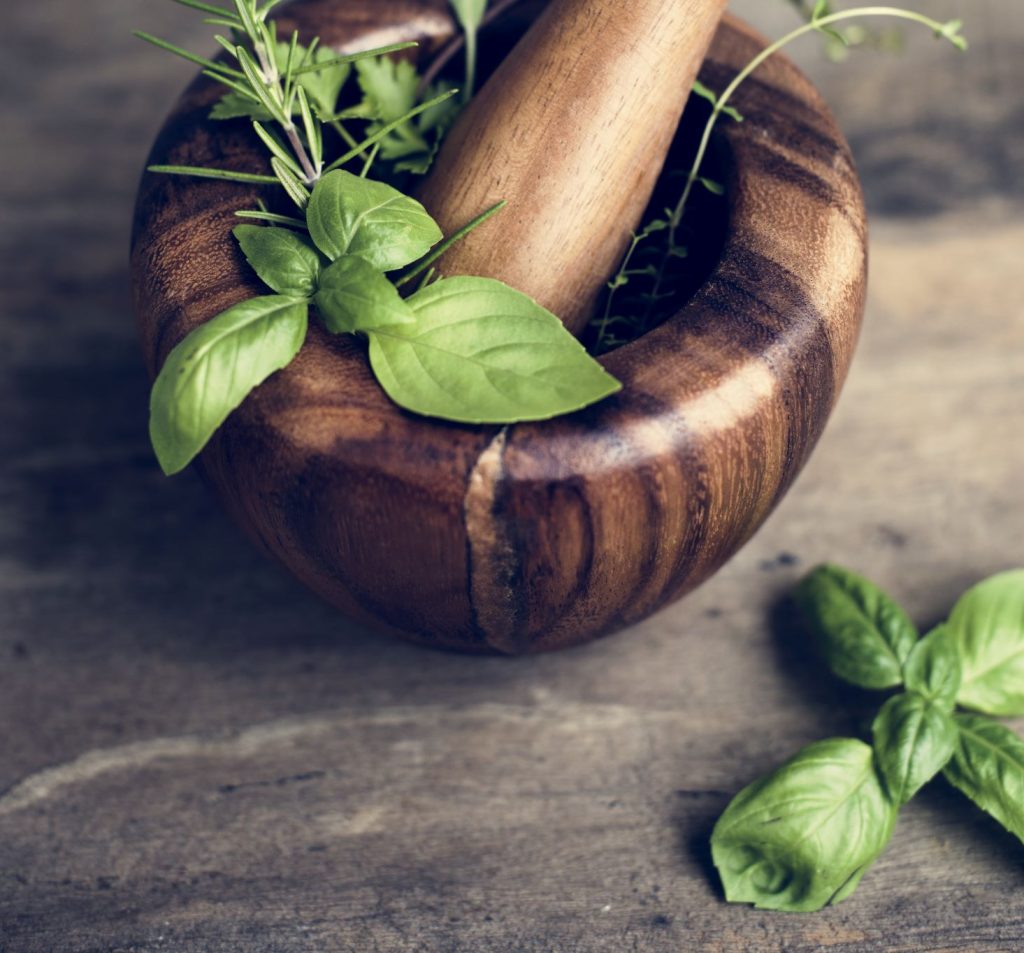
As a result of the increasing demand for herbs, phytopharmaceutical studies and the use of herbal treatment for the management of painful neuropathy have been expanding throughout the world. Medicinally, over 100 plants are known to have pain relief properties, and below are some of them that relieve pain and lower the risk of inflammation that has been discussed in this article.
The various herbal remedies listed in this article may only be effective on certain symptoms of inflammation, and it’s also very likely that not all of them may be potent on you. However, these natural remedies serve as valid alternatives to some prescription or over-the-counter drugs in the relief of pain and inflammation. Don’t be hesitant in seeking medical attention to help diagnose the cause of your pain and inflammation, and acquire some natural options for treating them if necessary. It is best to remember that pain is a signal from the body that all is not well. Pain may be temporary, as with a strained muscle, but it could also be a serious health issue that requires clinical and professional medical evaluation. Studies have not fully investigated all the options, but some records suggest that some natural remedies can be helpful, and various people also find them to be very helpful.

